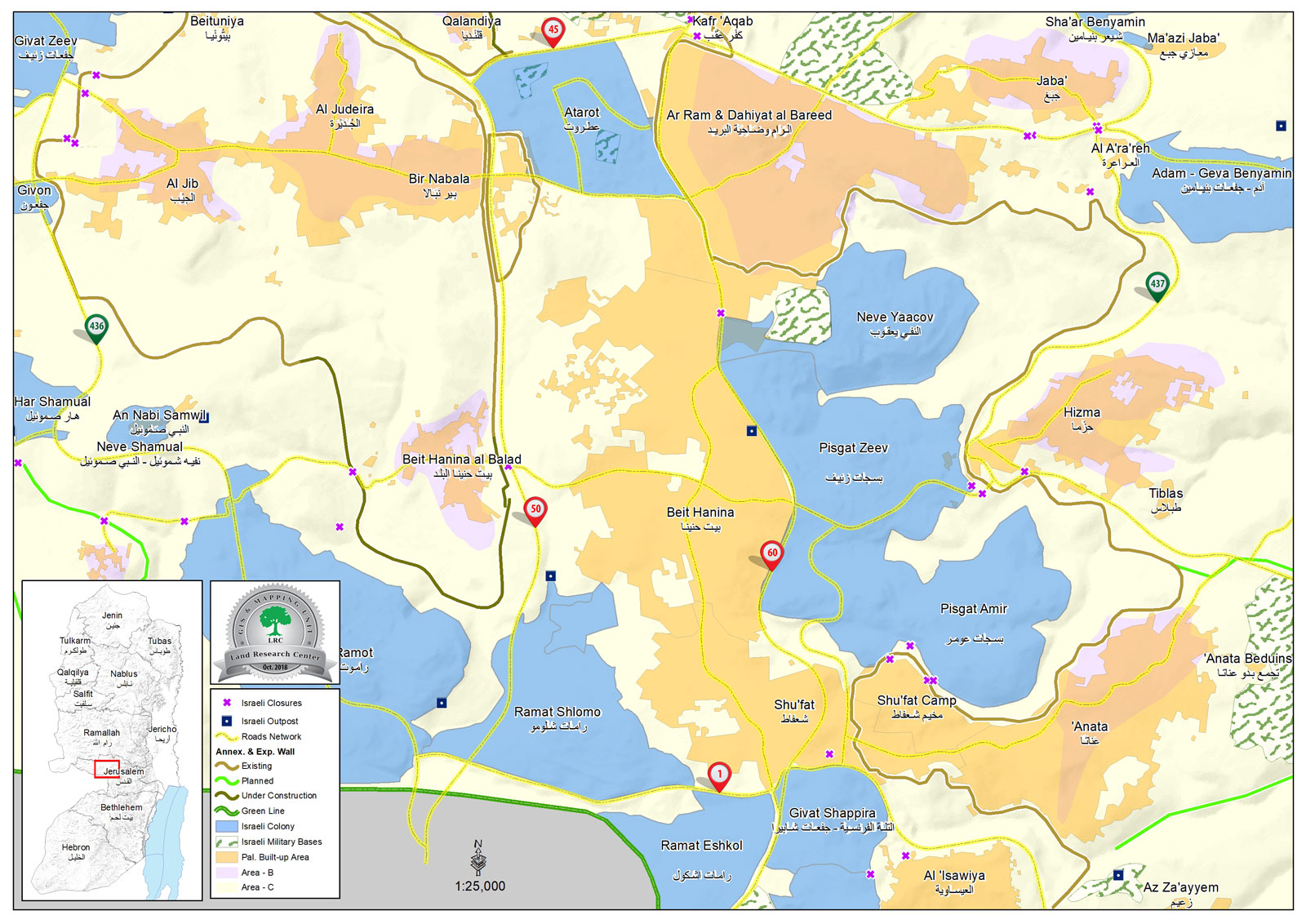2019-03-31
دائرة "أراضي إسرائيل" تجبر مواطناً على هدم منشأة على أراضي قرية حزما بحجة أن الأرض تتبع لملكيتها
في يوم الأحد الموافق 31 آذار 2019، أقدم المواطن خيري إبراهيم علي عسكر على هدم 3 منشآت زراعية في قرية حزما وذلك بعد أن أجبره الاحتلال على ذلك بحجة البناء بدون ترخيص ويتذرع الاحتلال بأن قطعة الأرض المقام عليها البناء تعتبر ملك لأراضي دولة "إسرائيل" ومصنفة كـ "أملاك غائبين".
والهدم عبارة عن 3 بركسات، كل بركس بمساحة 100م2، حيث كان بركس يستخدم لتربية الدجاج، والثاني لتربية الحمام، والثالث عبارة عن مخزن، ويقع بالقرب من تلك البركسات مستعمرة "بيسجات زئيف" والمقامة على جزء من أراضي مصادرة من قرية حزما.
وأفاد المواطن خيري إبراهيم:
في أواخر شهر شباط الماضي / أي قبل شهر، حضر للموقع موظفون من دائرة أراضي "إسرائيل"، وقاموا بوضع أمر هدم للبركسات وذلك بحجة أن الأرض تعود لتلك الدائرة الإسرائيلية، حيث أن الأرض تم شراءها من أصحابها والمقيمين في الضفة الغربية ويمنع الاحتلال أصحابها من الوصول إليها، وبعد التوجه إلى المحكمة فقد تقرر أن نقوم بهدم البركسات في مدة أقصاها منتصف شهر نيسان وإلا ستقوم سلطات الاحتلال بهدم البركسات، علماً أن الأرض جزء من أراضي بلدة حزما ولكن توسيع مستعمرة "بيسجات زئيف" كان على جزء من تلك المنطقة والتي لا تبعد سوى 500 متر عن الحاجز العسكري الفاصل بين القرية والمؤدي إلى القدس.
يضيف:
وتجنباً من أن تقوم دائرة "أراضي إسرائيل" بهدم البركسات، وتحميلي تكاليف الهدم، فقد قررت أن أقوم بتفكيك وهدم البركسات، وذلك ليكون الضرر أقل من أن تقوم سلطات الاحتلال بهدمه ومصادرة ما فيه وتحميلي تكاليف ورسوم باهظة، فقمت في يوم الأحد بتفكيك ونقل ما فيه إلى منطقة أخرى، وقمت بإزالته بشكل كامل.
ويذكر بأن العائلة تقيم في قرية حزما منذ سنوات طويلة والتي اصبحت الآن مع التوسع الاستيطاني جزء من المستعمرة "بيسجات زئيف".
أضاف:
كنا خلال 35 سنة الأخيرة قد قمنا بسلسلة جلسات في محاكم الاحتلال لإثبات ملكيتنا للأرض، حيث ادعت سلطات الاحتلال ملكيتها للأرض في بداية الأمر، وبعد أن قمنا بإثبات ملكيتنا للأرض، ادعت بأن الأرض "أملاك غائبين" كون أصحابها يعيشون بالضفة الغربية، وبالتالي فإنها تحت تصرف حارس أملاك الغائبين. وفي العام الماضي، قامت المحكمة العليا الإسرائيلي بتثبيت إدعاءات دائرة أراضي إسرائيل، واعتبرت أن الأرض ملك لها.
قرية حزما[1]:
تقع قرية حزما على مسافة 8كم شمال شرق مدينة القدس، ويحدها من الشمال قريتي جبع والرام، ومن الغرب بلدة بيت حنينا، ومن الشرق قريتي عناتا وجبع، ومن الجنوب قرية عناتا.
يبلغ عدد سكانها 7,118 نسمة حتى عام 2017م. وتبلغ مساحة القرية الإجمالية 10,513 دونماً منها 987 دونم عبارة عن مسطح بناء للقرية.
نهبت المستعمرات من أراضي القرية مساحة 1937 دونم وهي، أنظر الجدول:
اسم المستعمرة | تأسست سنة | مساحة الأراضي المصادرة / دونم | عدد المستعمرين |
آدم - جفعات بنيامين | 1983 | 0.9 | 1,801 |
النبي يعقوب | 1972 | 354 | 20,250 |
بسجات زئيف | 1985 | 76 | 38,684 |
بسجات عومر | 1985 | 1,506 | N.A |
المجموع | 1,937 | 60,735 | |
كما نهبت الطرق الالتفافية رقم 437 أكثر من (444) دونماً .
كذلك نهب الجدار العنصري نهب تحت مساره "418" دونم، وعزل خلفه "4,173" دونم، ويبلغ طوله "4,176"م.
[1] المصدر: وحدة نظم المعلومات الجغرافية - مركز أبحاث الأراضي.

